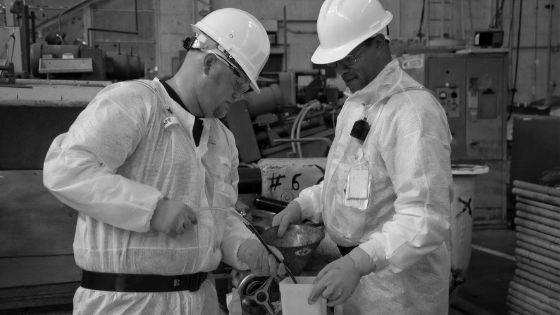What is Formaldehyde?
Formaldehyde is a naturally-occuring organic compound. It is found in a number of different materials, and is used to manufacture a variety of man-made products, including plastics, carpets, shampoos and glues. It is also found in many other industrial applications.
Formaldehyde Reclassified
The EU Parliament recently made a major change to the classification of formaldehyde; it is now officially recognised as a carcinogen. The news is relevant to all industries either handling or processing it. It follows the last major reclassification of formaldehyde as a Category 1B Carcinogen in 2016 (i.e. a substance presumed to have carcinogenic potential).
The latest change sees formaldehyde associated with the H350 (formerly R45) classification, with the associated words ‘May cause cancer’, or ‘presumed carcinogen’. A subtle change in the wording perhaps, but with significant implications.
Formaldehyde Limit to Decrease
In light of this news, the Workplace Exposure Limit (WEL) for formaldehyde is to decrease. Whereas the previous limit was 2ppm, the new limit will be 0.3ppm. Although this new legislation will come into effect in 2021, relevant workplaces must take immediate action to mimimise exposure to this harmful compound.
Immediate Action Required
Whereas the new limits only officially come into action in 2021, it is important to note that this is only a grace period to allow businesses time to implement changes. Following the latest understanding about formaldehyde’s harmful effects, action needs to be taken now to reduce exposure. So what do affected businesses need to do?
Controlling Exposure
Workplaces that handle or process formaldehyde must take steps immediately to reduce levels of exposure to ‘as low as reasonably practicable’ (ALARP). This means you will need to make a full assessment of the existing situation and implement further control methods accordingly.
By following the 8 principles of COSHH, as well as industry guidelines, you can then make the necessary changes. It is important to note that minimising exposure should be seen as an ongoing process; you need to continually review and reduce exposure levels. Seek industry guidance and professional help wherever possible.
Leading by Example
Formacare is the body representing key European formaldehyde producers and handlers. They have taken the lead by voluntarily implementing the 2021 WEL with immediate effect. This sets a great example to businesses involved with formaldehyde, whilst also highlighting how serious the reclassification actually is.
Getting Help
Making changes to existing working practices and procedures can represent a significant challenge for any organisation. Furthermore, the new WEL for formaldehyde will be difficult to reach for many businesses.
Aside from general disruption, the cost of implementing remedial changes can be prohibitive. However, given the dangers of exposure, it is important to make the best and most informed choices possible.
At Workplace Exposure, we understand that every business is different. We work to ensure you receive the best and most cost-effective solutions for your business. From a more general ‘audit’ to LEV testing, we will help to minimise disruption to your business, whilst ensuring it is as safe as possible for everyone concerned.
The reclassification of formaldehyde is not entirely surprising, given the fact that it was already considered to be a substance with the potential to cause harm. However, businesses need to take appropriate remedial action now in order to protect employees.
We’re here to help
At Workplace Exposure, our expert team have experience working with a variety of different businesses to ensure they offer a safe, compliant working environment. Our professional solutions and advice help to ensure your business meets compliance standards and is operating to best practice. If you need help in carrying out a COSHH air monitoring survey to help select the correct PPE, or your workplace noise assessment, we’re here to help.
Our approach
Get in touch with Workplace Exposure, either give us a call on 0800 689 4386, or fill in our enquiry form to discuss your monitoring or consultancy requirements.
We’ll then provide you with a no obligation proposal, we can often give an initial idea of fees whilst we discuss your needs.
Once you’ve accepted our proposal we can then schedule the work.
Following our site visit we’ll provide you with a comprehensive report giving you advice, recommendations and control measures where appropriate.
Implement the outcomes for compliance and a happier healthier workplace.
